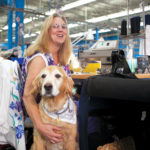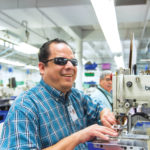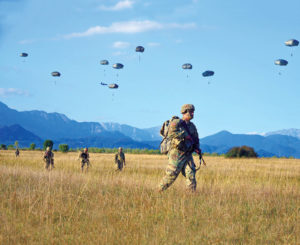
for fighting forces but have now been embraced by hunters, campers and first responders. Photo: U.S. Army by Paolo Bovo, www.dvidshub.net.
Located in Philadelphia, Pa., and founded in 1929, Ehmke Manufacturing Co. Inc. has made the military its primary target from the beginning, designing and fabricating a wide array of technical fabrics not just for all branches of the U.S. Armed Forces, but for allies and the defense industry in general. Products directed to the market include items such as MOLLE (Modular Lightweight Load-carrying Equipment) packs, assorted bags and carrying cases, tactical gear, aircraft interiors, thermal blankets and web assemblies. Ehmke also provides products to commercial OEMs (original equipment manufacturers) and for other industrial applications, but currently, about 80 percent of the company’s output is headed to the military, says Glenn Aust, vice president, engineering.
However, the company is also pointedly reaching out to commercial markets. Currently, of the 20 percent of products aimed at this sector, law enforcement and first responders account for 10 percent. Ehmke is targeting the fitness and outdoor recreation industries as well, markets that also seem most interested in its formerly military-only product lines.
“Obviously, to compete in the market today a company must diversify, and Ehmke has done that over the years,” Aust says. “We’ve seen a huge demand in commercial business and consumers who want the ‘cool looking’ military gear without the military price tag.”
Changes ahead
Marketplace dynamics dictated the pursuit of nonmilitary applications, says Aust. “Like the famous bank robber of the 1950s, Willie Sutton, said when asked why he robs banks—‘that’s where the money is,’” says Aust, explaining the reasoning behind the company’s commercial push.
He expects this portion of Ehmke’s business to expand. Eric Spackey, CEO of Bluewater Defense Inc., is shooting for the same.
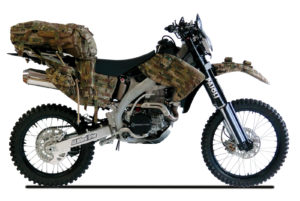
In business 31 years and headquartered in Corozal, Puerto Rico, Bluewater provides military, tactical and wearable technology apparel. When Spackey took over in 2009, the U.S. military accounted for 100 percent of the company’s business. Bluewater mass-produced (in the millions) items like coats and jackets, duffel bags, trousers, field packs, coveralls, parkas, sleep systems and body armor/hard plate carriers.
Spackey arrived at a difficult time. The U.S. government’s budget sequestration—which started about a year into his stint and lasted until around 2014—resulted in huge military budget cuts, leading to significant cutbacks in orders that nearly took the company under.
“It was wrenching,” he recalls. “At one time we had 2,000-plus employees, four production facilities and multiple warehouses. We had to let more than 1,500 employees go and close down all but one facility. The cutbacks affected people up and down the supply chain—some went out of business. The overall reduction in terms of gross spending was nearly 19 percent from the peak in 2010. We feel lucky to be alive.”
Adjustments were imperative, and Bluewater began actively pivoting toward commercial opportunities. Although the company is still heavily weighted toward the military—to the tune of about 95 percent—it did begin working with companies like New Balance, Patagonia, DRIFIRE, W.L. Gore and Associates Inc., Butler boots, ADS Tactical, Viking and Survitec. It also started developing strategic relationships with non-textile partners like Vorbeck Materials and WiseWear. Plans are to further diversify and expand
the company’s market profile.
“It’s taken many years to recover,” says Spackey. “The negative impact on the balance sheets of industry partners in the supply chain supporting the DoD [Department of Defense] is something that will take years to rebuild.”
Commercial opportunities
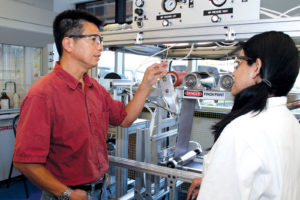
“Technology transition is key for companies,” says Cheryl Gomes, technical program manager, HEROES and the UMass Lowell Fabric Discovery Center at the University of Massachusetts in Lowell. “Having dual-use purposes for any product is important.”
UMass Lowell partners with the U.S. Army’s Natick Soldier Research, Development and Engineering Center (NSRDEC) to improve troop well-being. HEROES—Harnessing Emerging Research to Empower Soldiers—is where the NSRDEC scientists, university faculty and staff, and students work together in research labs at UMass, Gomes explains. Currently, there are more than 25 ongoing collaborative projects focused on advancing science and technology for U.S. soldiers, such as developing safer and more efficient flame-retardant materials for uniforms.
Gomes offers several examples of products or textiles that have made the move from military to commercial, such as camouflage patterns that were originally designed for fighting forces but have now been embraced by hunters, campers and so on, as well as by first responders.
“Another example is where the military wanted a physiological status monitoring shirt,” she says. “Numerous companies worked on the technology and launched their own products for the medical and sports arenas. TrainTrak physiological monitoring system is one, and the Zephyr™ Bioharness device is another.”
Some firefighters also have physiological monitoring systems, Gomes adds. One is WASP™, Wearable Advanced Sensor Platform, designed to measure firefighter physiological responses to exertion, heat, wearing heavily insulated protective clothing and carrying heavy equipment, among other data. Perhaps of greatest value is the system’s capability for the 3-D tracking of personnel, potentially reducing the time required to locate and rescue a downed or trapped firefighter.
Ehmke’s nylon tactical brand, High Ground Gear, originally consisted of a range of military-only products. But thanks to growing brand awareness, High Ground Gear items are found on a variety of consumer websites. The company was also involved in supplying products for government aircraft interiors. Now these items are being incorporated into custom-designed interiors for helicopters used to transport people to remote logging areas.
Several products from Bluewater Defense are working their way into the commercial sector, such as the Naval Academy running suit produced for New Balance and the Underway BDU (Battle Dress Uniform). Originally created for Navy Seals, this four-way stretch fabric product is still being used by “very specific military groups,” says Spackey, but is also popping up in the paintball arena. The company is also working with commercial camo providers to supply them with camo gear.
The military is always looking for innovation—such as apparel that is lighter, dries faster, is more air permeable and stronger—that will provide an improved experience for those tasked with defense, says Spackey.
“Soldiers currently bear incredibly heavy loads, for example body armor, weapons, communication gear, water and so on,” he explains. “So anything we can do to reduce this load while offering greater comfort, functionality and protection we’re striving to achieve. Our recent work with Vorbeck Materials on a lightweight, wearable graphene is a great example of this.”
The company put an antenna—configured to help enhance or facilitate cell phone coverage—into coats and backpacks. It also put it into a dog collar, enabling people to track their dogs. Already being used by a number of specific groups in the military, this innovation is poised for launch by a “major brand-name apparel manufacturer,” says Spackey.
Future-based pivoting
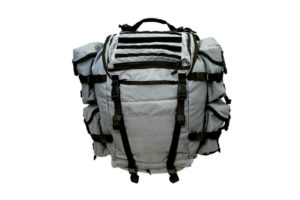
The military-to-commercial transition can prove daunting. Consider the contracts. As Spackey explains, military contracts are generally large, multiyear orders. Commercial contracts are typically for smaller quantities and are much shorter, running generally less than a year. Additionally, turnaround times are shorter in commercial work, forcing companies to respond much faster than they may be used to. The margins also tend to be lower, while the risks tend to be higher, he says, adding this is why many companies have difficulty pivoting from DoD to commercial work.
“Companies need strong engineering and planning support to ensure production lines are set up efficiently and are closely managed,” Spackey says. “For companies that have mainly produced for the DoD, the systems and people are not set up for the requirements of many of the commercial brands. We’ve begun investing in systems, people and automated equipment that will enable us to better align with commercial partners.”
At the same time, because manufacturers are no longer required to follow statutory regulations, such as utilizing only mil-spec materials in their products, the ability to use commercially available fabrics, hardware and webbing, and to eliminate certain “military-unique features” can help drive costs down, says Aust.
“Not all commercial customers recognize or want to pay the price of quality,” he explains. “Many of our military products are designed and fabricated to withstand some of the most extreme environments without any degradation of the product—sometimes with a lifetime warranty. A commercial customer for an outdoor duffel bag may not need or want to pay for that level of quality.” Even so, the company uses its quality certifications—ISO 9001 and AS9100—as marketing tools, demonstrating Ehmke’s commitment to quality.
Strategic partnerships with suppliers and manufacturers are “paramount” for the company, says Aust. Spackey says the same, mentioning that Bluewater Defense’s relationship with Advanced Functional Fabrics of America (AFFOA) is an especially beneficial one. The nonprofit institute is headquartered near the Massachusetts Institute of Technology. According to its website, AFFOA’s mission is to enable “the transformation of traditional fibers, yarns and textiles into highly sophisticated integrated and networked devices and systems.”
Spackey, who is also chief marketing officer for AFFOA, says his involvement has allowed him to look for new areas of innovation that will help differentiate the company from its competitors.
“AFFOA enables me to look across the entire textile and apparel supply chain—DoD and non-DoD—to see where we can integrate our technology,” he explains. “We work with start-ups, universities, manufacturers and industry partners, each offering a unique ability/capability that will help shape the future of what we wear, building the foundation for digital wearable technology.”
Pamela Mills-Senn is a freelance writer based in Long Beach, Calif.
Although the interest in cutting-edge technology is certainly strong in the military and the commercial markets, there’s still plenty of demand for lower-tech products in both arenas. Consider the National Industries for the Blind (NIB), headquartered in Alexandria, Va. Since 1938 when it was created by the Jarvits-Wagner-O’Day Act, NIB’s mission has been increasing the economic and personal independence of those who are blind, through the sales of SKILCRAFT® items and other products and services provided by the AbilityOne® Program, and through job creation and career development programs as well. The organization accomplishes this by working with a nationwide network of nonprofit agencies that employ more than 5,800 blind workers (including wounded/blind veterans) in a variety of career fields, manufacturing being one of these, says Jeff Papalia, program manager, textiles.
“NIB operates in more than 250 locations across the country,” he says. “We have more than 100 associated agencies and operate more than 150 Base Supply Centers on military bases and federal government installations nationwide. NIB has 32 associated nonprofit agencies that produce cut-and-sew for federal government customers; of these 27 are producing products for the military.”
From its beginning, NIB and its associated agencies have been supplying all branches of the U.S. military and the federal government with items like pillowcases, mops and brooms. Over the years the list of products has grown to include uniforms (Army Combat Uniform, Airman Battle Uniform, physical fitness and training uniform), bedding, protective equipment and much, much more. Apparel, such as jackets, trousers, suspenders, safety apparel vests, cold-weather shirts and T-shirts, is also on the list.
The military and government may comprise the bulk of its sales, but NIB does sell products to the commercial market, some of which—such as mattresses, box springs and mattress pads, blankets, bedspreads and pillows—began their lives in the military. And like the list of military products, over the years the roster of items the company sends into the commercial sector has expanded, propelled by NIB’s commitment to quality and its mission.
 TEXTILES.ORG
TEXTILES.ORG



